The lionfish is a beautiful predatory fish popular in saltwater aquariums. With their long spines and dramatic patterns, these fish are truly a sight to behold. Unfortunately, they have begun to pose a problem in the wild as an invasive species. Invasive species are animals that have established a population in a location they are not naturally found. Read on to learn about the lionfish.
Description of the Lionfish
There are many different species of this fish. The vast majority of them are light colored, with red stripes. They have long spines radiating from virtually every fin on their body. These spines, while beautiful, can be quite deadly to some animals, and they are equipped with venom to protect the fish from being eaten.
Interesting Facts About the Lionfish
This is an interesting and hardy fish. While these fish are a serious threat in the Atlantic as an invasive species, they are still beautiful and intriguing animals.
- A Fish of Many Names – Lionfish are also commonly called zebrafish, turkeyfish, butterfly-cod, firefish, and tastyfish.
- On the Subject of Names – All lionfish are in the genus Pterois. This name originates from the Greek “pteroeis” which means “winged,” or “feathered.”
- A Fish Fishing? – Lionfish have small tassels growing from their eyebrows and chins. These tassels are similar to an anglerfish’s lure, and are used to entice small fish to approach them. As the fish get older, they become more adept at hunting, and stop using the tassels.
- Spiny Snacking – Lionfish are actually quite healthy to eat, as long as you remove the spines! Unlike some other venomous fish (like pufferfish), the venom is only located in the spines, making safe consumption of the body of the fish quite easy. Even amateur fishermen can properly remove the venomous spines to prepare a fish for eating. See how to easily remove the spines here.
Habitat of the Lionfish
These fish are found mainly in shallow coral reef environments, though they can occasionally be found in deeper water. They frequently inhabit tropical and subtropical waters, and they appear to prefer coastal areas and protected harbors for establishing territories. They hunt on the edges of reefs, lagoons, and rock formations.
Distribution of the Lionfish
Natural Range
Different species of lionfish have different natural ranges. Populations can be found from the oceans of Southern Korea and Japan, to the coasts of Eastern Australia and the South Pacific Ocean. Another species naturally occurs in the Indian Ocean.
Invasive Range
Invasive lionfish species have become established and spread in the western Atlantic Ocean. These fish have been confirmed across much of the southeast and gulf coasts of the United States, as well as in the Caribbean sea. Juveniles have even been caught off the coast of Long Island, NY.
Diet of the Lionfish
These beautiful fish feed primarily on small fish, mollusks, and invertebrates. They feed at night and in the early morning, and swallow their prey whole. They have also been known to occasionally cannibalize smaller members of their own species.
Invasion of the Fish-Snatchers! The Problem with this Invasive Species
This invasive species is increasingly problematic off the southeast coast of the United States. Approximately 93% of these invasive fish are one species – the red lionfish. It is believed that they were originally released into the Atlantic from Florida, with the first recorded incident being fish escaping from a destroyed aquarium during Hurricane Andrew in 1992.
These predators have been intentionally released as well. It is believed that novice aquarists release the fish when they prove to be more difficult to care for than originally anticipated. Basically, they toss the fish in the ocean when it starts eating their other fish.
The implications of invasive species can be extremely damaging to natural ecosystems in the area. This top predator is pushing other overfished populations out of their natural habitats. These fish directly compete with native predatory fish, like snapper and grouper, for space and food. Ravenous predators, lionfish also eat juvenile individuals of virtually all species of fish, and as they continue to multiply they eat more and more.
Lionfish and Human Interaction
As a countermeasure to the damage these predators are causing in the Atlantic Ocean, invasive species initiatives have been set by various organizations to encourage the hunting of these fish. One organization, the Aruba Lionfish Initiative (“ALFI”) offers free courses in becoming a Lionfish Hunt Leader. The Florida Fish and Wildlife Conservation Commission (“FWC”) also provides plenty of useful information for potential “lionfishers.” The FWC even offers reimbursement opportunities for killing these fish.
Domestication
The lionfish has not been domesticated. It has, however, been kept widely in aquariums. They are wildly popular in the saltwater aquarium world because of their striking coloration.
Does the Lionfish Make a Good Pet
It can make a good pet, if an indifferent one, in the right setting. You will never be able to cuddle your pet fish. Because this fish is a predator, the other fish in your aquarium must be larger than your lionfish when it is fully grown. Any fish smaller than the them will be eaten.
Lionfish Care
Lionfish require more care than the average aquarium fish. Saltwater aquariums require significantly more maintenance than freshwater aquariums. In addition to the added difficulty of maintaining a saltwater aquarium, these fish must also be fed a complex diet, and oftentimes require live food. It is also recommended to keep them in an aquarium 120 gallons or larger, with numerous hiding places.
Behavior of the Lionfish
Lionfish are generally nocturnal, meaning they prefer to hunt at night. They can, however, be spotted swimming during the day, especially in their invasive range in the Atlantic. They can live up to 15 years, and spend that time in established territories that they defend aggressively from any and all intruders.
Reproduction
While breeding, the males become darker, and the females become paler. This is the only time gender can be easily distinguished in these fish. The female fish produce 15,000 eggs each time they mate. The eggs hatch in 36 hours, and spend about one month in a larval stage, being transported by ocean currents.


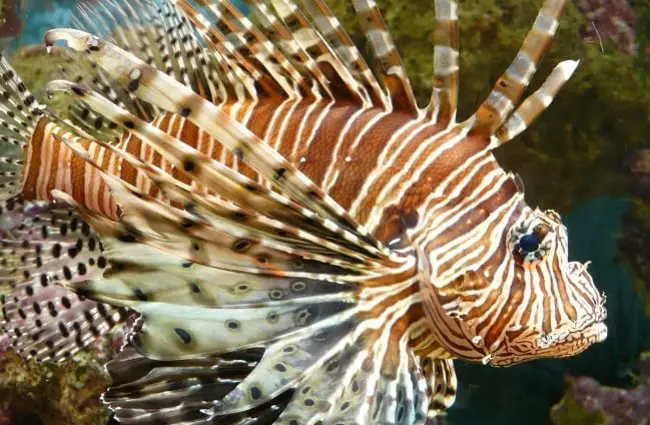
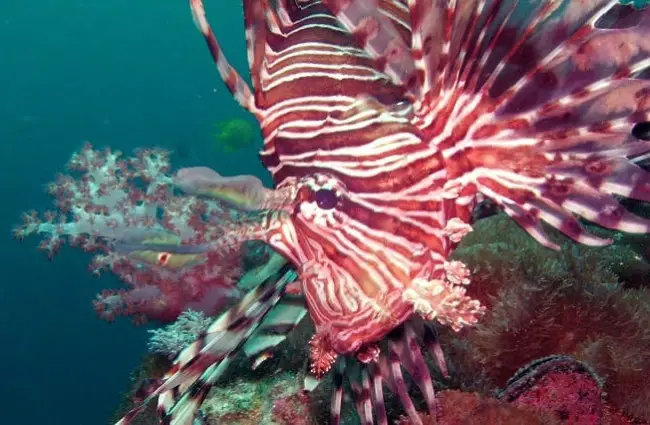
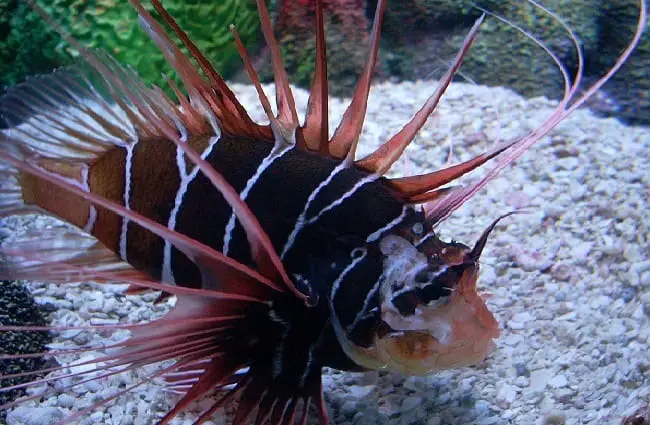



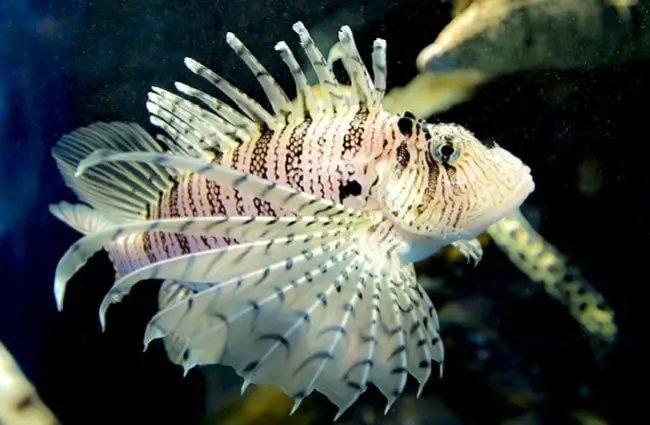





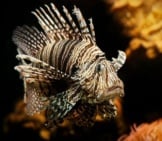
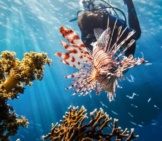
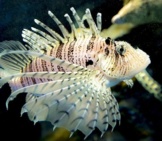
![Red Angus Closeup of a beautiful Red Angus cowPhoto by: U.S. Department of Agriculture [pubic domain]https://creativecommons.org/licenses/by/2.0/](https://animals.net/wp-content/uploads/2020/03/Red-Angus-4-238x178.jpg)












![Red Angus Closeup of a beautiful Red Angus cowPhoto by: U.S. Department of Agriculture [pubic domain]https://creativecommons.org/licenses/by/2.0/](https://animals.net/wp-content/uploads/2020/03/Red-Angus-4-100x75.jpg)

